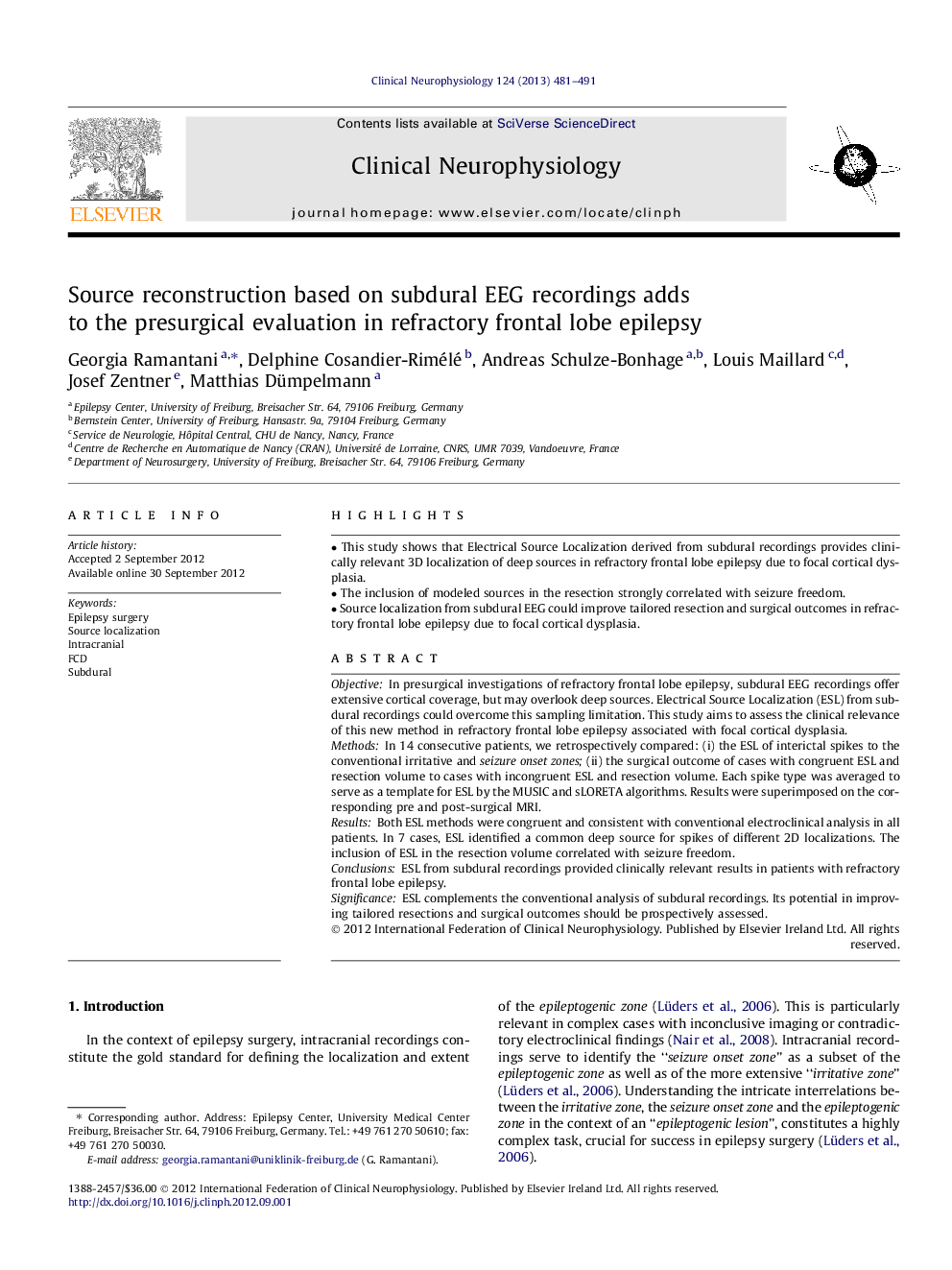| Article ID | Journal | Published Year | Pages | File Type |
|---|---|---|---|---|
| 3044359 | Clinical Neurophysiology | 2013 | 11 Pages |
ObjectiveIn presurgical investigations of refractory frontal lobe epilepsy, subdural EEG recordings offer extensive cortical coverage, but may overlook deep sources. Electrical Source Localization (ESL) from subdural recordings could overcome this sampling limitation. This study aims to assess the clinical relevance of this new method in refractory frontal lobe epilepsy associated with focal cortical dysplasia.MethodsIn 14 consecutive patients, we retrospectively compared: (i) the ESL of interictal spikes to the conventional irritative and seizure onset zones; (ii) the surgical outcome of cases with congruent ESL and resection volume to cases with incongruent ESL and resection volume. Each spike type was averaged to serve as a template for ESL by the MUSIC and sLORETA algorithms. Results were superimposed on the corresponding pre and post-surgical MRI.ResultsBoth ESL methods were congruent and consistent with conventional electroclinical analysis in all patients. In 7 cases, ESL identified a common deep source for spikes of different 2D localizations. The inclusion of ESL in the resection volume correlated with seizure freedom.ConclusionsESL from subdural recordings provided clinically relevant results in patients with refractory frontal lobe epilepsy.SignificanceESL complements the conventional analysis of subdural recordings. Its potential in improving tailored resections and surgical outcomes should be prospectively assessed.
► This study shows that Electrical Source Localization derived from subdural recordings provides clinically relevant 3D localization of deep sources in refractory frontal lobe epilepsy due to focal cortical dysplasia. ► The inclusion of modeled sources in the resection strongly correlated with seizure freedom. ► Source localization from subdural EEG could improve tailored resection and surgical outcomes in refractory frontal lobe epilepsy due to focal cortical dysplasia.
